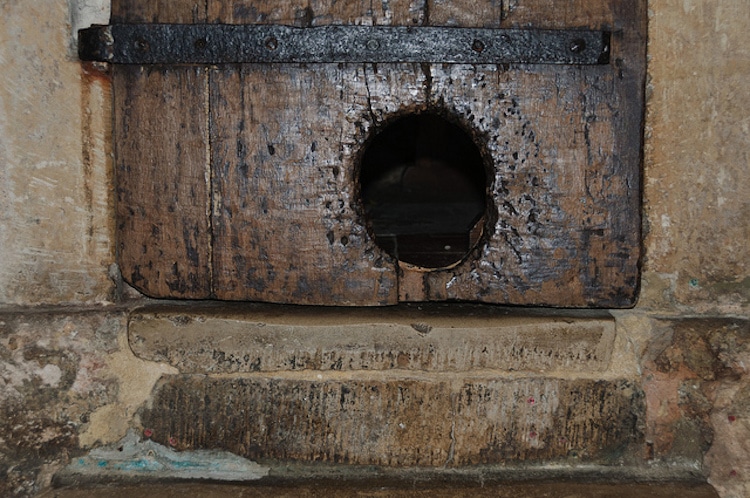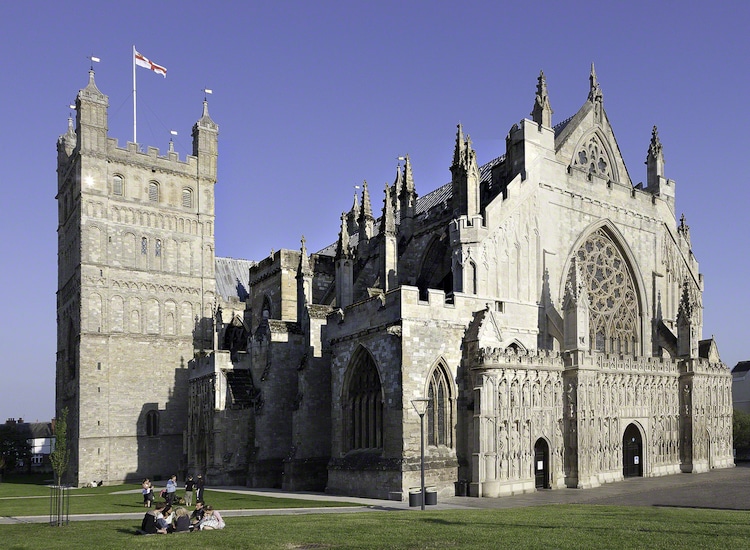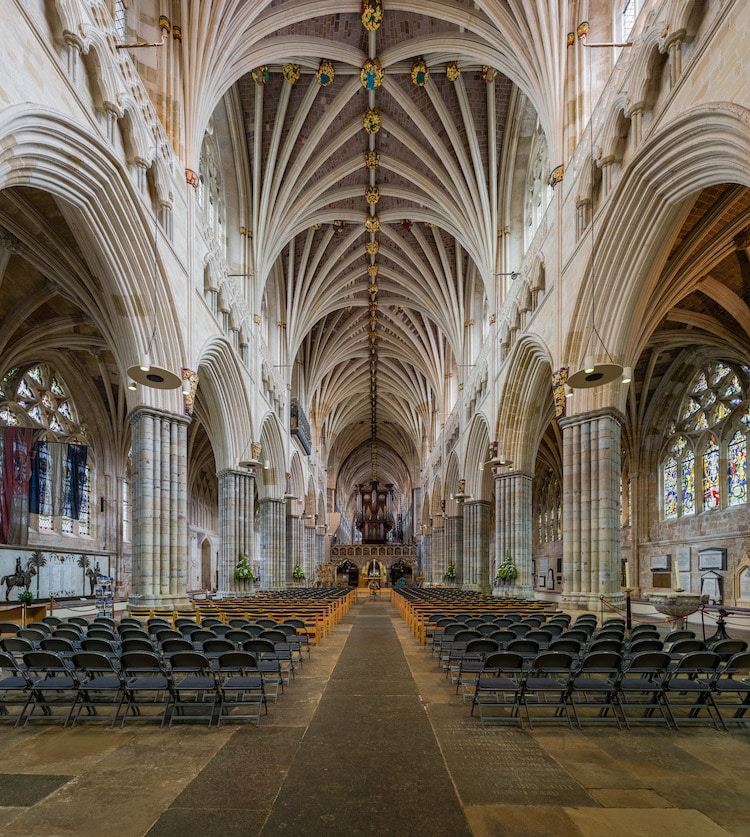
The cat flap of the North Tower at Exeter Cathedral.
(Photo: Richard Gillin via Flicker, CC BY-SA 2.0)
In medieval days, cathedrals would have been overrun with mice and rats without a feline prowling the premises. To keep vermin in check, the magnificent Exeter Cathedral—known formally as the Cathedral Church of Saint Peter in Exeter—has employed cats for centuries. In fact, they even added a cat flap to one of the structure’s doors, gouging a cat-sized opening into the wood. This endearing sign of a valued cat occupant has fascinated the internet. There is even historical evidence that shows these ancient mousers were well-paid for their hunting services.
Exeter Cathedral was built across several centuries of the medieval period. It boasts two Norman towers dating from 1114 and 1133, respectively. A 13th-century Chapter House has a decadent wooden vaulted ceiling. Much of the stone knave was erected in the 14th century, including the magnificent carved bishop’s throne. Considering the size of this religious center, many hands would have been needed to keep it running smoothly. Among the helpers were custors—cathedral workers who oversaw things such as ringing bells and ceremonial vestments. Another special duty seems to have been paying the cathedral cat.
These clever felines were provided with an ancient cat flap, a hole carved into the North Tower door. This led inside the cathedral, under the magnificent medieval astronomical clock, where the cat would be able to scamper about in pursuit of vermin. In return for its service, the cat was paid handsomely. From 1305 to 1467 its wages appear in cathedral records. Thirteen pence per quarter was given “to the custors and the cat” or “for” the cat, according to some notes. The cat’s wages, coming to one pence a week, were likely used by the custor to supplement its diet of rodents with other food. Two cats may even have been on the payroll when the expenditure doubled to 26 pence between 1363 and 1366.
Exeter’s long history of working cats went beyond the medieval period. In World War II, an unpaid mouser named Tom roamed the church. While Tom likely dodged the bombs that damaged parts of the church, he did lose an eye after crossing paths with an owl. He was so valued for his work that Tom’s likeness was carved in stone in the restored Chapel of St. James. Today, the cathedral cat named Audrey—a long-haired orange beauty—still uses the world’s oldest cat flap, following in the footsteps of her many great predecessors.
The 14th-century cat flap in the door of Exeter Cathedral has let working cats in and out for centuries.
View this post on Instagram
Medieval mousers were even paid for their service of keeping the church mouse and rat-free.
The oldest existing cat door.
Exeter Cathedral, UK, has a 1305 AD door that is mentioned as an entrance for cats. pic.twitter.com/8UUu434LbL
— Brian Roemmele (@BrianRoemmele) December 17, 2022
Today, Audrey the cat uses the same door her predecessors did, although she is only paid with treats and love.

Exeter Cathedral, or the Cathedral Church of Saint Peter in Exeter, is a medieval cathedral in England. (Photo: WyrdLight.com via Wikimedia Commons, CC BY-SA 3.0)

Exeter Cathedral would have required much mousing! (Photo: DAVID ILIFF via Wikimedia Commons, CC BY-SA 3.0)
h/t: [Vintage Everyday]
Related Articles:
Art History: Ancient Practice of Textile Art and How It Continues to Reinvent Itself
Sister Duo Weaves Textured Wall Hangings Inspired by Australian Landscapes
How to Crochet: Learn the Basics of This Time Honored Handicraft
Artist Fills Forest with Life-Size Sculptures Made from Woven Rods of Willow
